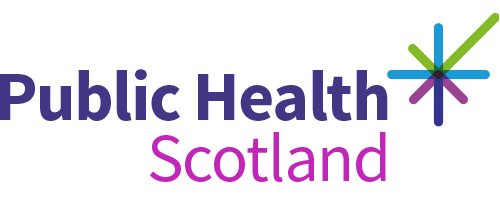Viral respiratory diseases in Scotland surveillance report
Official statistics
- Published
- 13 November 2025
- Type
- Statistical report
- Author
- Public Health Scotland
About this release
As part of Public Health Scotland’s commitment to providing clear, concise and accessible viral respiratory data, there have been some improvements to the presentation this season’s viral respiratory report. These have included updates to the accessibility of figures presented in the report and a change in the title of the report from Viral respiratory diseases (including influenza and COVID-19) in Scotland surveillance report to Viral respiratory diseases in Scotland surveillance report.
This weekly release by Public Health Scotland presents epidemiological information on respiratory infection activity, including COVID-19, across Scotland. Due to the dynamic nature of all datasets included in this report, figures contained within each update may be subject to change in future releases. Any revised figures will then be reflected within the latest update.
Main points
For the period, 3 November 2025 to 9 November 2025 (ISO week 45):
- Patient attendance at GP practices for influenza-like illness (ILI) and acute respiratory infection (ARI) remain at baseline level, although rates of ILI are rising.
- Influenza activity in Scotland has increased from baseline to low levels, with most typed samples being a drifted strain of H3N2 (belonging to subclade K). This is an earlier start to the season than typically observed. Laboratory cases of diagnosed influenza A have increased by 72%, with incidence rising from 4.6 to 7.1 per 100,000. CARI primary-care surveillance has also shown a statistically significant increase in influenza A detections between weeks 44 (12.6%) and 45 (26.1%). Both laboratory and CARI surveillance show highest influenza test positivity in the 5-14 age group (23.5% and 53.1% respectively). Hospital admissions for influenza A rose by 90%, from 115 to 218, although the increase is as expected given influenza activity.
- In week 45, laboratory confirmed RSV activity increased, although it remains at baseline levels. Test positivity remains highest in the under 1 and 1-4 age groups, in line with expected seasonal patterns. CARI data show a statistically significant 4-week increase in RSV test positivity, from 0.6% to 1.2%. Hospital admissions due to RSV increased to 81 (from 54) with around 86% of cases in the 0-4 age group.
- COVID-19 activity continued to decrease or remain stable across all system measures, excepting a small increase in laboratory confirmed incidence in the 1-4 age group (from 2 to 4 per 100,000), raising the activity level in this group from baseline to low.
- Adenovirus increased to a low activity level via laboratory surveillance and 4-weekly test positivity increased via CARI surveillance. Parainfluenza decreased in both laboratory and CARI systems between weeks 44 and 45. All other pathogens remained stable.
Further information
The next release will be on 20 November 2025.
Find out more
Previous Publications
Versions of the Weekly national respiratory report publication released before 30 November 2022 may be found on the Public Health Scotland website.
Versions of the COVID-19 weekly statistical report publication released before 30 November 2022 may be found on the Public Health Scotland website.
Open data
Open data from this publication is available from the following weblinks:
Further data
- The COVID-19 Vaccine Wastage datafile was updated on 18 April 2024 to include the most recent information.
- The COVID-19 in Adult Care Homes in Scotland datafile was updated on 27 July 2023 to include more recent information.
- 28 September 2022 COVID-19 statistical report publication contains information on COVID-19 infection and vaccination in pregnancy in Scotland.
- 2 March 2022 COVID-19 statistical report publication contains information on Highest Risk (shielding patients list)
- 7 November 2023 Community Acute Respiratory Infection (CARI) surveillance in primary care contains information on flu Vaccine effectiveness in community settings.
- 25 May 2023 Interim 2022/23 influenza vaccine effectiveness: six European studies, October 2022 to January 2023, contains information on flu Vaccine effectiveness in hospital settings.
- 13 January 2024 Estimated number of lives directly saved by COVID-19 vaccination programs in the WHO European Region, December 2020 to March 2023, contains information on lives saved due to COVID-19 vaccination
General enquiries
If you have an enquiry relating to this publication, please email phs.respiratory@phs.scot.
Media enquiries
If you have a media enquiry relating to this publication, please contact the Communications and Engagement team.
Requesting other formats and reporting issues
If you require publications or documents in other formats, please email phs.otherformats@phs.scot.
To report any issues with a publication, please email phs.generalpublications@phs.scot.
Older versions of this publication
Versions of this publication released before 16 March 2020 may be found on the Data and Intelligence, Health Protection Scotland or Improving Health websites.
